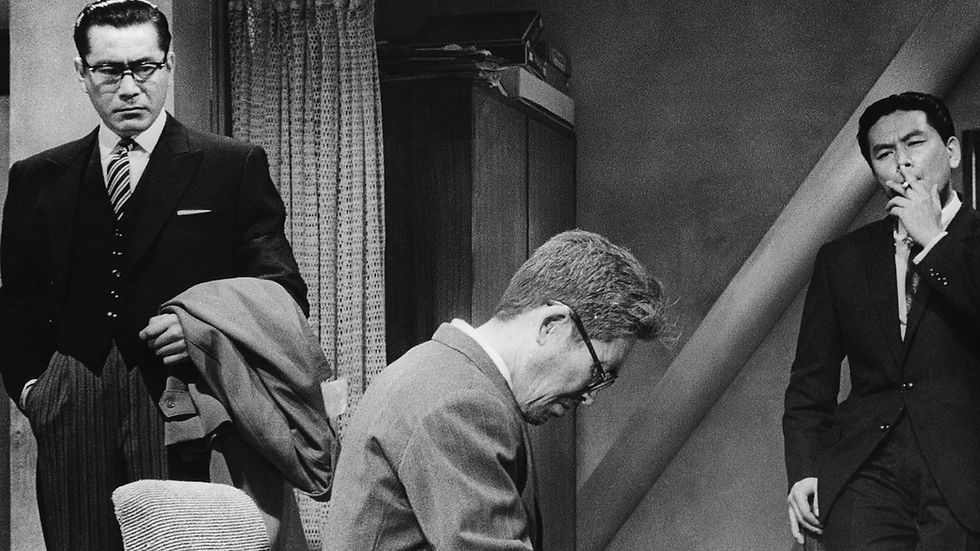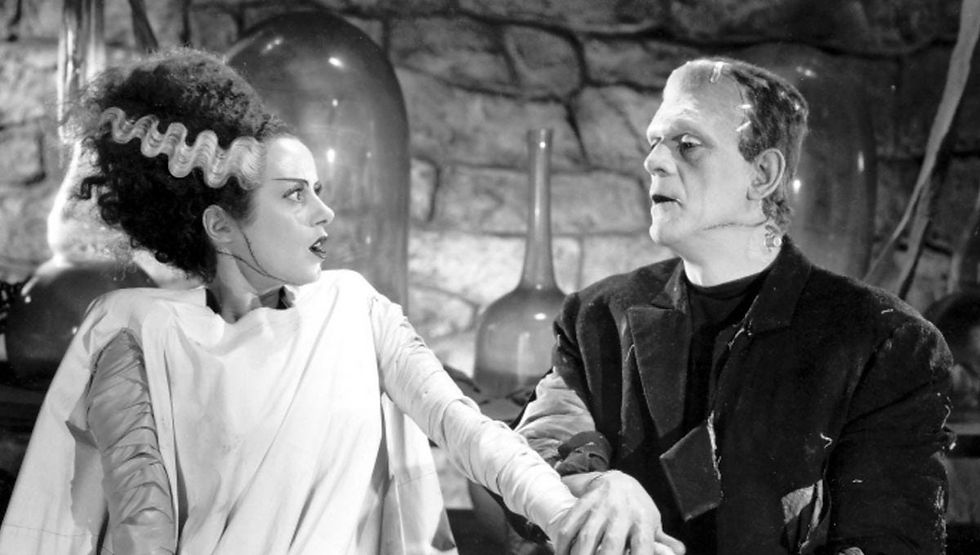Mishima: A Life In Four Chapters (1985) Review - Dylan McCully
- Dylan McCully
- Sep 21, 2023
- 4 min read
Updated: Sep 22, 2023
Written by Dylan McCully, 10/14/22
Dylan McCully's Cinema: https://www.imdb.com/list/ls521125877/

"Only knowledge can turn life's unbearableness into a weapon."
When revisiting a favorite film, there is always a worry in the back of your head that it won't live up to what you remembered it to be. In this case, it's the opposite. With the most visceral and imaginative set and production design this side of A Clockwork Orange, a lush score, an endlessly rich palette of colors, and incredible acting, directing and writing make Mishima: A Life in Four Chapters not just one of the best films of the 1980's, but one of the greatest of all time. I share the same sentiment of any aspect of the film. Compare the greatest scripts, soundtracks, visuals, stories of all time to this.

I feel as if giving an example of a single great scene is a heinous discredit of every other scene in the film, but I also feel obliged to give some of my favorites. There is a scene at the beginning of the fourth chapter where Mishima and his men get out of there car and walk into the military base, which by itself is fine. The reason I mention this is to get into a bigger point, that being the encyclopedia of filmmaking techniques that went into making this film. The aforementioned scene is the first done on handheld, which stood out to me because of the incredible use of crane, dolly and steadicam shots that make up the rest of the film. The lighting on the majority of scenes takes a level of mastery that is very rare. The sound design is impeccable. In the first chapter, (specifically, this happens a couple more times), we see a cut from a colorized world, the present day story of the last day of Mishima's life, to the earliest flashback of Mishima looking out of a window as a child, shot in black and white. This cut is seamlessly accomplished by the present day Mishima simply turning his head to look out the car window, then boom, one of the many narratives start. The climax of the film is my favorite scene of the present day Mishima storyline, which I won't spoil. (Although it actually happened. Reading biographical articles about Yukio Mishima's life and death is comparable to a plot of a movie because of how it really played out.) Some of the best looking scenes in the film are shot by crafting a set against a completely dark room, usually using bright colors for contrast. The adapted storyline from Mishima's novel The Temple of the Golden Pavilion tells about a young Mishima trying to kill the idealistic beauty that has taunted him all of his young life. These scenes are usually filled with green and gold. Another novel that Schrader adapts is one called Kyoko's House, where a young Mishima, an actor, falls in love and gives himself to a lady that his family is in debt to, as they begin a sadomasochistic relationship. These scenes are filled with pink and grey. The last main adaptation is Mishima's novel Runaway Horses, in which young men who want the tradition and purity of imperial Japan to return, so they plan to overthrow the government. These scenes contain a lot of orange and black. It's these details that enhance rewatch value, and the subtle choices that add to the mise en scene such as what may cover actors at certain points or where the actor is looking can make a great movie a true masterpiece.

Compared to it's peers, well, let's not kid ourselves, compared to other films to come out of America in 1985, it's peerless. (Brazil was released in America, but Gilliam directed and released the film in the UK first. Another masterpiece from 1985, Come and See, was not released in the United States. It was barely released in the USSR, but that's a story for another time.) Movies were stale in 1985, as they are now, because of the reliance on sequels and blockbusters. The true filmmakers either stopped making as much money and had to conform to the new ways, were big enough to do whatever they wanted, or did whatever they wanted in bereft of profit. At this point, Schrader could get the film funded because people believed in his talent, rightfully so, but if you look at his filmography, he's done some generic crap over the 90's and 2000's. The reason for this? Make money to fund his true passion projects such as 2017's First Reformed. Mishima: A Life In Four Chapters wasn't a massive hit like other 1985 movies such as Back To The Future, Rocky IV, E.T., Beverly Hills Cop, The Breakfast Club or the Goonies, but Schrader could've told you that before he made the film. An avantgarde narrative with subject matter that will disturb many won't interest the plebian commercialites of Americana, but will be resepected among other artists, which is more important. 9/10
"All my life I have been acutely aware of a contradiction in the very nature of my existence. For forty-five years I struggled to resolve this dilemma by writing plays and novels. The more I wrote, the more I realized mere words were not enough. So I found another form of expression."
Paul Schrader Ranked:
Mishima: A Life In Four Chapters (1985) - 9/10






Comments